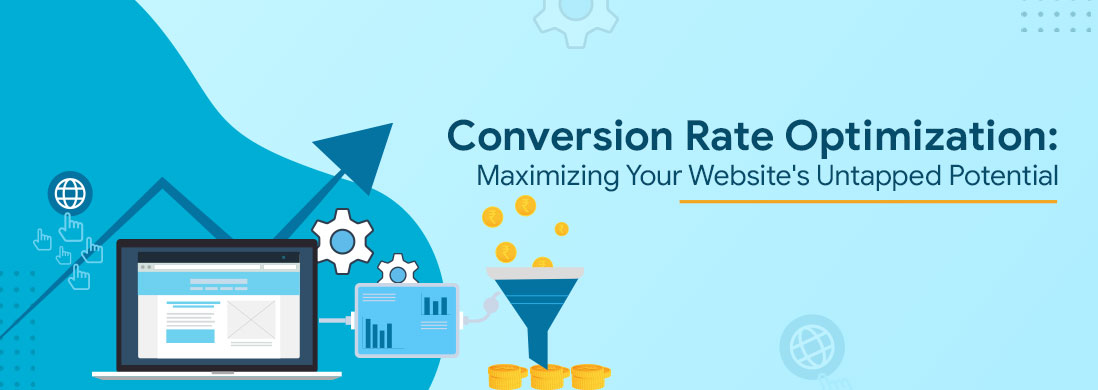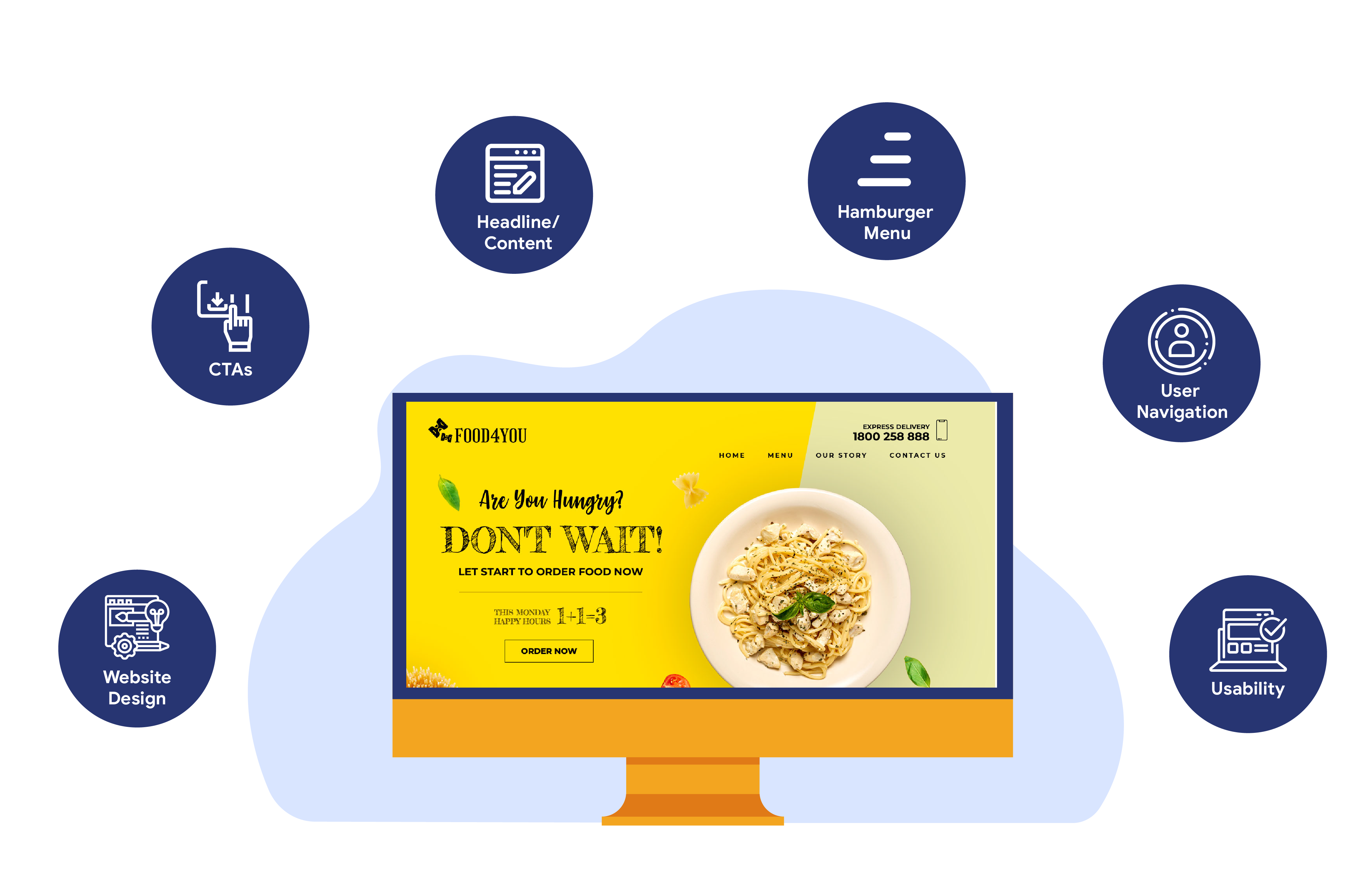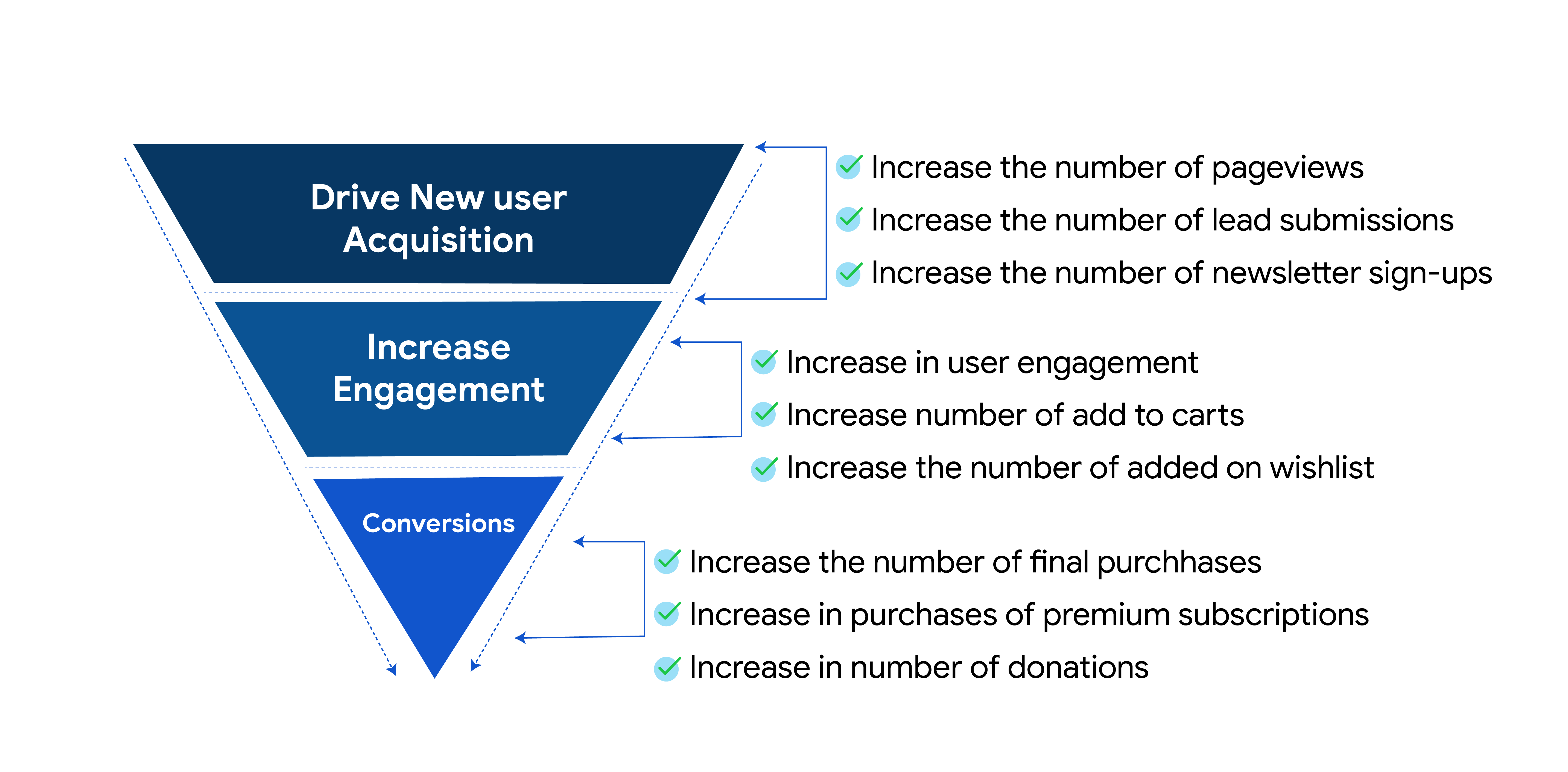Do you struggle to convert visitors to customers on your website?
Do you want to improve the performance of your website and increase sales?
You might benefit greatly from conversion rate optimization services
CRO is the process of optimizing your website to increase your website performance in a way that led your website visitors to take the next action in your conversion funnel.
This article will look at everything you need to know about conversion rate optimization (CRO) services, including the basics, best practices, and advanced strategies.
Whether you’re a beginner or an expert, this article will give you all the details you need to improve your website’s performance and drive more conversions. So, let’s dive in and start optimizing!
What is CRO (Conversion Rate Optimization)?
Conversion rate optimization (CRO) is a process through which businesses maximize their return on investment (ROI). CRO services help businesses to optimize their marketing efforts and spends.
CRO is a result-oriented approach to website optimization, which focuses on increasing the rate of website visitors to boost sales, increase customer count, etc. Businesses also consider CRO a key strategy to enhance marketing campaigns by better-targeting visitors with relevant content and enhancing the overall user experience.
The conversion rate optimization goals for the website are accomplished by optimizing various website components, including the website design, content, the placements of “CTA” , user navigation and other factors like usability. Finally, this process can enhance the overall conversion rate, thereby increasing the business’s total return on investment (ROI).
Why is Conversion rate optimization important?
Conversion rate optimization (CRO) is integral to a successful digital marketing strategy. It involves everything from analyzing the behavior of website users and optimizing the website to improve the user experience and increase the conversion rate. This is highly important for small, medium, and large businesses as it can help increase the overall efficiency of digital marketing campaigns and the ROI.
CRO is mainly used to identify various sections for improvement, including the website design, layout, user experience, flow, etc. By optimizing these key components of the website, companies can make their digital marketing strategies effective and result-oriented. This also helps improve customer satisfaction to a large extent, resulting in a profitable customer base.
How do companies typically start with these conversion rate optimization activities?
Generally, companies start their Conversion rate optimization (CRO) journey by exploring their existing available data, such as website analytics, user behavior, surveys, and more. This data can provide invaluable insights into where users are having difficulty, their preferences and expectations, and any common patterns or issues observed. Armed with this data, companies can formulate hypotheses around what could be done to improve the user experience, increase engagement and ultimately convert more users into customers.
Using tools such as Google Analytics and Heatmap, a conversion rate optimization expert will collect relevant data on conversion funnel drop-offs and user behavior. Insights are then generated from these data points about the next course of action.
Where do companies go wrong with their CRO initiative?
Unfortunately, a common issue companies often encounter when beginning their CRO journey is the lack of a concise strategy and action plan. Companies also fail to consider the nuances of their customer base and how their individual needs and preferences may impact their conversion rate. Additionally, companies may not have the resources to fully understand the underlying causes of their website’s poor performance, such as a lack of targeted traffic, low engagement, and inadequate website optimization or a failure to implement data analytics such as Google Analytics correctly which leads to inaccurate data tracking. Further, companies may neglect to conduct extensive A/B testing of their website.
What are the Benefits of Conversion Rate Optimization?
CRO is a vital tool company utilizes to boost their sales, increase customer engagement, and reduce advertising expenses. With the right conversion rate optimization strategy and planning, businesses can benefit to a large extent. Some of the benefits of CRO include:
1. Increased Revenue
One of the important benefits of using CRO for businesses of all sizes is that it can be largely used to increase revenue. To do this, companies need to strategically analyze a user journey through the website, right from signup to placing an order. They also need to identify the areas in the website which need significant improvement that can help to create an environment that encourages users to engage with a website in a way that leads to increased profits.
2. Improved User Experience
Conversion Rate Optimization (CRO) can help enhance the visitor experience on a website and within marketing campaigns, resulting in improved engagement and ultimately boosting conversions. Increasing engagement metrics can provide essential insight into the effectiveness of one’s campaigns and what drives users to take action.
3. Lower Advertising Costs
By bringing in a targeted audience on the website who have a high propensity to convert, the cost of advertising can be significantly reduced. Additionally, increasing the number of visitors that convert can dramatically improve the return on investment (ROI).
4. Increased Customer Loyalty
By optimizing the conversion rate, businesses can create an environment where customers have more opportunities to purchase products and services. CRO also helps to ensure that customers are getting the most out of their purchase and that the customer experience is satisfactory and enjoyable. Through CRO services, businesses can tailor their marketing strategies to a specific customer base, helping to create loyal customers that are more likely to make repeat purchases.
What is considered a good conversion rate?
There is no single universal measurement for a good conversion rate. What is considered an average conversion rate greatly varies from industry to industry and between campaigns and individual conversion goals. According to research, the average rate ranges globally from 1-4%.
How should it be ideally done?
A structured approach toward Conversion Rate Optimization will help digital marketing companies optimize and measure the success of their campaigns for better results.
1. Defining Goals
A structured approach is critical for success when optimizing conversion rates for digital marketing campaigns. Companies need to be able to identify their target goals and key performance indicators (KPIs) to measure their progress and understand what needs to be done to improve their results. The first step in the process is to determine which KPIs are important for the campaign. This will vary depending on the type of campaign and the desired outcome. For example, if the goal is to increase the number of leads generated, then the KPIs might be the number of website visitors, the number of emails sent, and the number of leads generated.
2. Auditing
A website audit is an important step in any CRO strategy. It enables the marketer to gain insights into how well the website performs in terms of user experience, content, search engine optimization, and other factors influencing conversions. By taking a closer look at the website, marketers can determine where improvement is needed and how to make those improvements.
3. Optimization
Several steps can be taken to optimize a website’s conversion rate, including conducting thorough research and analysis to identify areas of improvement, optimizing website design and layout, creating compelling and engaging content, improving website load times, simplifying the conversion process, and using A/B testing to assess the effectiveness of different strategies. It’s important to continuously monitor and evaluate the results of these efforts to ensure that the conversion rate improves over time.
Leverage Effective Conversion Rate Optimization Services
In conclusion, conversion rate optimization services are is critical to any digital marketing strategy. Following the tips and best practices outlined in this guide can significantly increase your website’s conversion rate, boost your ROI, and ultimately grow your business. Remember to continually monitor and analyze your website’s performance, test new strategies, and make data-driven decisions to stay ahead of the competition. With dedication, patience, and a willingness to learn from feedback, you can achieve the desired conversion rates and take your business to the next level.





